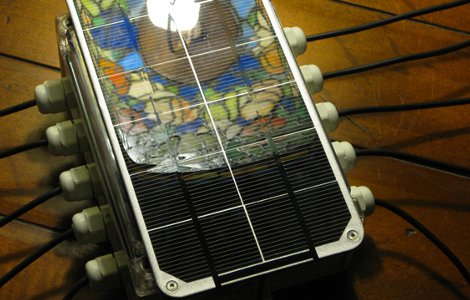
Apparently bees tend to use different areas of the hive throughout the year. All we know is not to mess with them. [Max Justicz], on the other hand, does exactly that at his high school. He built a whether resistant solar powered multi-point temperature logger to do such things. The logger is designed to track heat movement within the hive throughout the year. Bees can be tracked like this because they generate a good amount of heat, some even use it to kill off predators.
Building weather resistant electronics is no picnic. You have to deal with rubber O rings, cable glands and clunky waterproof connectors. [Max] shows the whole process of mounting the various components into the enclosure. A solar panel feeds an Ardunio Mega, charging electronics, and SD card shield. With a 1GB SD card this bugger is in for a long haul. The 6600mAh battery should keep it running excessively long though. We’d cut the fat a bit though and swap out that Mega for something less power hungry, but going super low power can get a bit fancy. That mega is powerful enough to incorporate every other bee project we have here.
[Max] has yet to install the logger in his high school’s apiary but will update with logs once he can furnish them. We can’t wait to see the patina it develops over the seasons.














whether resistant
Building whether resistant electronics
Hey, goats can mess your shit right up.
What?
I am glad the first comment is what my first thought was.
These electronics are option-proof, clearly.
also sorry for reporting your comment, HaD needs to (re)move that link.
“Whether”?
Really?
Guys, don’t rely solely on spellcheck for your proofreading. Read back over your article at least once more before posting.
Come now, you still haven’t figured out that HaD deliberately does this? It insures that a post will get replies, and that runs up the posting counters.
Also explains the compressed air / PVC threads.
Cool project. Good beekeepers in this day and age deserve much respect. I got an unexpected education on honeybees when a colony moved into my bedroom wall. Found out that beekeeping seems to be a dying art, there were few left in my area, and none willing to relocate the bees live; apparently due to problems with varroa mites and hybridization. Really sad that they had to be killed. I successfully took on the job myself, rather than paying $300. They do generate a surprising amount of heat. I was able map out their locations with an IR thermometer, even through drywall.
I’m staring at that thing wondering “What the hell is that colorful pattern on the PV cells?”
Appears to be the reflection of the stained glass lampshade of the lamp used for illumination for the picture.
Very cool that kids in high school are building projects like this.
I was wondering the same thing. Never seen solar cells like that, until you pointed out it is a reflection. You can see the bulb in the reflection as well. Nice catch.
Project should yield some interesting data about our little honey producing friend.
Yea, it’s a Tiffany lamp….
Weather or not this is a hack, it is very cool!
Yep. In a follow-up they could design a PCB and bring everything on one board for a fraction of the cost. They could also reduce the battery or work with supercaps and efficient sleep/wake cycles. Might be a step too far for highschoolers but the PCB design is doable.
Lots of educational value here.
cool project and yet when i see the pic the only thing that comes to mind is ugh ugly lamp
Come on guys, I get a bit sick of all comments on ‘high power usage’ of (x)Mega series Atmels. If you want to get serious about power, just drop most Arduino code (maybe keep the bootloader) and start reading the datasheets about power modes. I guess if you’re going to analyse the power usage you’ll get more profit out of unpowering the temperature sensors while not being used for measurement….
Do HaD editors read the comments? Do they learn about their egregious spelling and grammar mistakes. Do they then go back and *fix the errors*!!?
whether -> weather